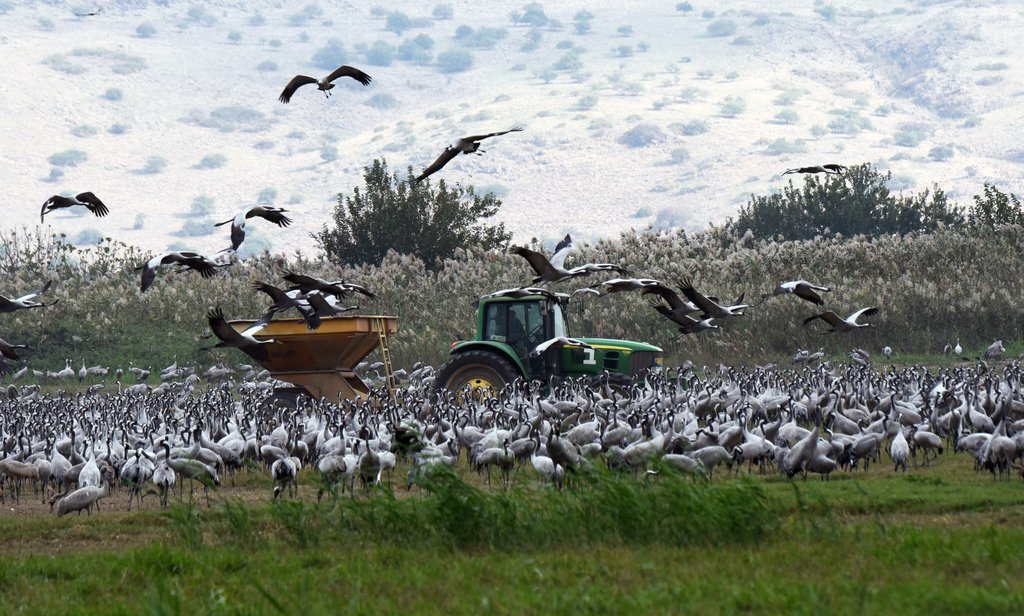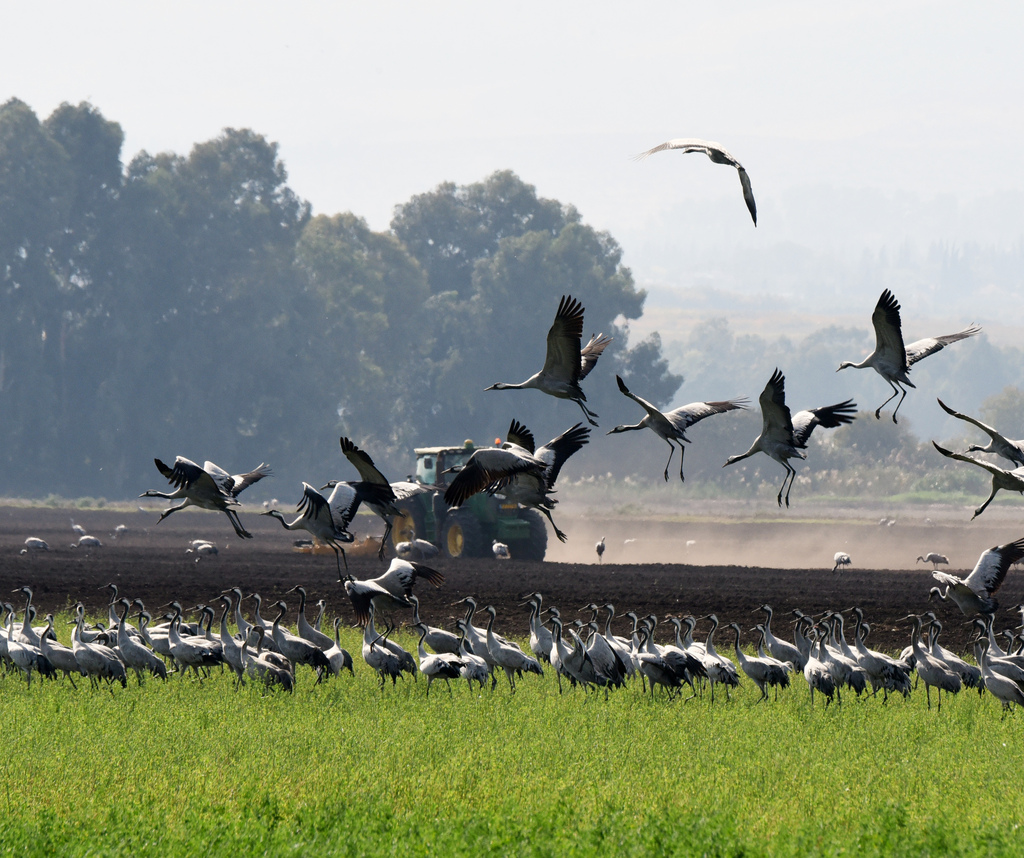Getting your Trinity Audio player ready...
Each winter for a brief period of time, crane birds - known for their long necks, long legs, and very broad wings - become an attraction for Israeli tourists passing through the north.
Thousands of these species migrate from Siberia to Africa every winter, making a short stopover in Israel.
If you passed by the Hula Valley in northern Israel recently, you probably heard a strange combination of loud sirens, explosions, and gunshot sounds on the one hand, and loud chirping of the crane birds on the other.
In recent years, the northern Israeli valley became a permanent home for a lot of cranes who decided to stay after making a stopover on their way to Africa. While it's exciting to see the unusual species on Israel's soil, the birds became a real problem for the local agriculturists.
Crane is a very smart bird, it can adapt to changes, and as a result, when they land in local field, they don't just pull out the seeds the agriculturists had planted, they also dig the ground around them to pull the roots, and look for insects in the soil.
Cranes arrive in Israel
(Video: Inbar Shlomit Rubin, Jewish National Fund)
"Cranes cause a lot of damage to our fields, when a pack of them lands, they decimate it completely, and we have to cultivate the whole field all over again," said farmer Zamir Carmi.
Due to their large size, local farmers have labeled the cranes "wild boars with wings," and in order to prevent them from destroying the fields, they acquired some 45 bird banishers.
The bird banishers are equipped with repelling gas guns that make explosion sounds, flashing lights, and sirens of all sorts. "We go through a field and shoo away the cranes, but shortly after they return and basically the noise bird banishers makes only scares them for a little while," said one farmer. "It's a short term solution."
Another solution is one proposed by the Jewish National Fund (Keren Kayemet LeYisrael), in which they gather the cranes and feed them in a designated area in the Hula Valley.
That way they prevent them from wandering into fields looking for food. At the peak of the migration season, some 10 tons of corn seeds are spread each day, and the total cost of feeding is estimated between NIS 6-7 million a year, half of which comes from the farmers' pockets.
CEO of Agriculture Company of Upper Galilee Regional Council Ofer Barnea said there is no perfect solution to this problem at the moment. "The main goal is to prevent the damage at the lowest possible cost. If we won't feed the cranes, we will need more bird banishers which cost a lot, so our main goal is to feed them to concentrate them in one area, even though they aren't so disciplined."
The crane phenomenon in the Hula Valley is quite new and began only two decades ago when cranes were first spotted back in the '70s.
Over the years, some cranes began staying in Israel permanently instead of migrating to Africa because the agricultural landscape in the African countries they tend to migrate to had changed, which made them look for another place to settle in.
Inbar Shlomit Rubin, a KKL-JNF offical in charge of the Hula Valley, says the problem is not unique to Israel.
"They were migrating to North Africa through the Gibraltar region, and then suddenly 400,000 cranes had just stayed in Spain. The same thing happened in France, even in Germany. In the United States, where there were cranes that used to migrate to South America, suddenly began staying in Florida.
"In Europe, the countries compensate the farmers for damages, in the U.S. they just shoot them, and here we are trying to maneuver," she added.








